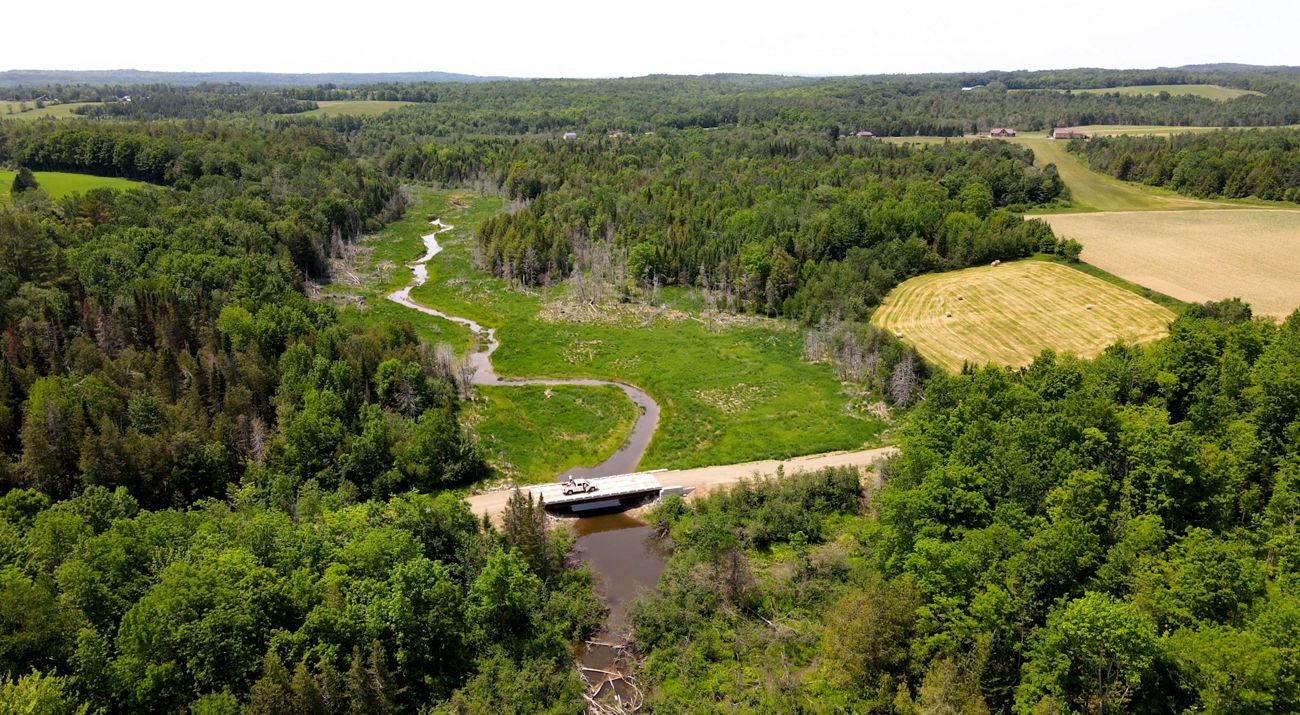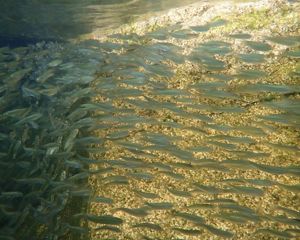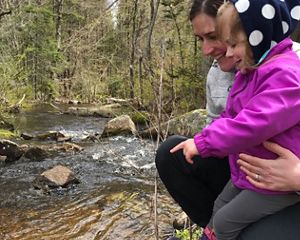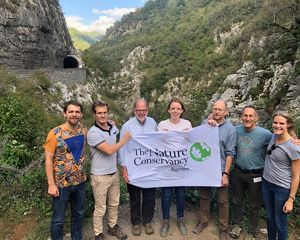Fish and Chips
How a stream restoration project is helping Atlantic salmon and a family potato farm
On a clear fall day, a massive tractor pushes forward through the dirt as it trundles its way along rows and rows of potatoes. The spuds are scooped from the earth by the big machine and tossed through a chute into a truck driving alongside. Eventually, the truck will be emptied, using rumbling conveyor belts and more chutes, into a barn to await delivery to the farm’s customers.
Jim Crane watches the process as he has for more than fifty years.
“Well, we moved into the house, the farmhouse, when I was seven years old—July twentieth, nineteen sixty-nine, ‘cause Neil Armstrong walked on the moon,” recalls Crane.
Today, Crane, along with his cousin, Steve, owns and operates Crane Brothers Farm in Exeter, Maine— one of the largest potato-growing operations in the state and a major supplier to Frito Lay, Inc. Many of the potatoes grown here will become Lays-brand potato chips.
“We spent a lifetime on this stream,” he says, nodding toward a ribbon of water that flows through the property. “There’s a really nice swimming-fishing hole right here we used to catch trout out of all the time.”
A Restoration Opportunity
The stream from Crane’s fond memories is Allen Stream, a tributary to the Kenduskeag River in the Penobscot River basin. Water flowing past this farm makes its way to Penobscot Bay and the Gulf of Maine. The Cranes have left a fair-sized buffer of woods between the fields and the stream, and a recently constructed bridge to Jim's house creates no obstacle. But at a point where the stream crosses under an access road, the farmers periodically block the flow to create a pond for irrigation.
In 2019, that barrier in the stream caught the attention of Ben Matthews, watershed restoration scientist for The Nature Conservancy in Maine. Using survey data and a decision tool developed by TNC, Matthews determined that removing this obstruction would open 15 miles of ideal cold-water spawning habitat to migrating fish. Adding to this, biologists have observed Atlantic salmon spawning in the larger Kenduskeag River just downstream. Smaller tributaries are ideal places for hatched salmon to find a safer place to develop and grow. All of this made the Allen Stream obstruction one of the highest priorities in the entire Penobscot drainage.
Matthews approached the Cranes and they liked the idea of restoring the stream…in theory. But they also needed an irrigation source for their potatoes. The cost of the restoration project was another significant consideration.
Partners Come Together
Enter the Maine Aquatic Connectivity Restoration Project. Made possible by a $6 million award to TNC through the Federal Regional Conservation Partnership Program (RCPP) and administered by the U.S. Department of Agriculture’s Natural Resources Conservation Service (NRCS), the five-year project augments private landowner funding and provides expertise in stream restoration efforts like this one. Eileen Bader Hall, TNC's freshwater restoration manager, manages RCPP in partnership with NRCS staff.

While the program, in addition to the landowner, covered the costs of the stream restoration, TNC also helped offset the expense of a new irrigation system by connecting existing rain retention ponds to the fields watered by the current system. This funding agreement ensured that the original water use will not be exceeded – and Allen Stream will no longer be affected by irrigation use.
“We have benefits for nature by allowing endangered Atlantic salmon to access critical rearing and possibly spawning habitat, and we’re increasing the efficiency of the farm,” says Matthews. “So, nature wins and people win at the same time.”
Jim Crane takes a break from his work and sits on a low guardrail edging the new bridge spanning the stream.
“In the end, we’re all happy I believe,” reflects Crane. “For our family farm it worked really well.”
Through the Allen Stream project, Matthews and Bader-Hall have demonstrated how innovative technology, critical financial resources, and good-old-fashioned relationships are restoring essential habitat for species that really need it to survive.
Want More Nature News?
Sign up for our monthly e-newsletter to get even more nature news right in your inbox.




